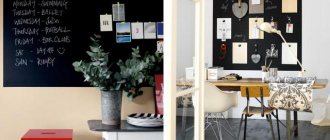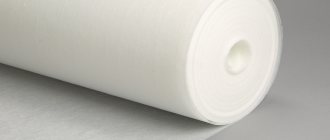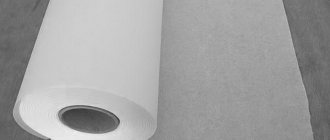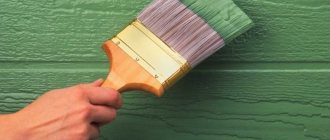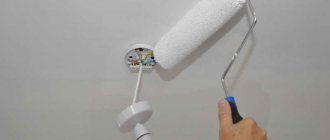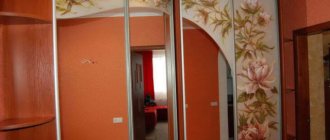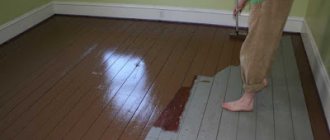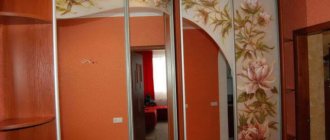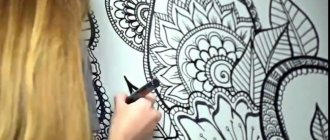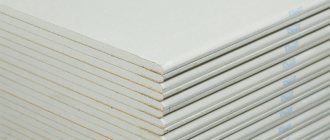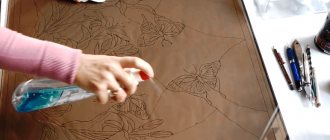Views: 4,086
You can purchase a T-shirt with a design already on it, or you can order a T-shirt via the Internet with a unique design that will be applied to it industrially...
However, it is much more interesting to make such a drawing yourself. All you need for this is special paint for painting on clothes, quality brushes and a good mood! Read the article and watch the video of a T-shirt being painted.
Should I use water with oil paints?
In oil paints
You already have everything you need to practice painting; technically,
you can
do without breeding.
... The fact is that to form a paint paste, oil for the binder, a thinner to adjust the thickness and varnish have already been added to the color pigment so that the paint dries for a moderately long time when used
.
Interesting materials:
How do you know if your baby has a hernia? How do you know if your child has nasal polyps? How do you know if you are getting stretch marks? How do you know if you have low hemoglobin? How to find out what is connected on your phone? How do you know what you have connected? How to find out what kind of iPad you have? How do you know if you have mastitis? How do you know that the oven is 180 degrees? How to find out what is blacklisted on Viber?
Everything on the shelves, or Which fabric paint to choose?
I am often asked what materials do I work with?
Today I want to share with you the discoveries and discoveries that I have made while using many, many materials.
First of all, this is the main dye. The main dye for me is C-Kreul Javana OPAK dye for dark fabrics
Its principle of operation is that the paint seems to lie on top of the fabric without penetrating much (from the inside, sometimes the design is not visible at all)
This paint allows you to work on textiles of any color; on black, red and bright yellow you will have to tinker and it will not cover in the first layer, but it will cover.
I almost never work on very dark colors in one layer.
The pattern is noticeable to the touch, the fabric will not stretch at all in place of the pattern, this must be taken into account!
OPAK is suitable for painting any type of textile; you can use it to paint T-shirts, bags, sneakers and not have to think about the brightness of the design or whether it will cover the stain or the original color. They can also create amazing skin effects.
- Palette of 18 colors.
- The paint dries quickly, is fixed with an iron or in the air for 3 days, washable at 40 Celsius. Wash inside out!
- Available in glass 20 ml cost 210 rubles, 50 ml - 330 rubles.
If there is a dye for dark fabrics, then there is, of course, a dye for light fabrics, I have also been working with it recently:
Its main principle is penetration into the fabric; it does not lie on the surface of the fabric, like my favorite OPAK, but is absorbed into it, leaving a rather dense and bright color.
If the fabric has a color, a delicate shade or a more saturated one, then it will act as a light filter for the dye and interact with it on equal terms. For example, if your fabric is yellow and you paint on it with blue, then in the end the color will turn out more green or with a hint of green, you should not expect a pure color - like in a jar when painting on fabric that has color!!! This point must be taken into account in your work.
And also, from my observations, it darkens when it dries, and it cannot be ironed over the design before the main fixing (if I can afford this with OPAK, then here you “steal” the color and design, so be careful with the iron on the front side)
- You can wash it at 60 Celsius according to the manufacturer, but you can trust them
 . I usually wash the painting at 40 - no higher.
. I usually wash the painting at 40 - no higher.
The undoubted advantages of this dye, in my opinion, are:
- Large palette of 36 colors, including white and colorless.
- The most delicate colors.
- It's easy to achieve a watercolor effect.
- The pattern is softer to the touch.
- Mixes with all C-Kreul fabric dyes (applies to all TEX dyes)
If you work on light and white fabrics and like watercolor effects, subtle transitions and colors, then C-Kreul's Sunny is your dye!
- Available in 20 ml glass from about 150 rubles, 50 ml. 330 rub.
Additional dyes are effects paints, with a metallic effect, for example:
I really like Javana from C-KREUL.
- There are 18 colors in the palette.
- All colors are suitable for working on dark fabrics.
The texture of the paint is incredibly pleasant, it’s my favorite consistency; by the way, the main OPAK dye has a slightly thicker consistency, but here it’s absolutely perfect. The shine is very metallic. If you mix it with a non-metallic dye, the effect will decrease, and the more you mix, the lower the effect.
- Very suitable for working with stencils.
- Can be used as a base color, but there is too much glitter for me, I only use it as decoration.
- Fixation - iron for 5 minutes from the inside out in cotton mode, or bake in the oven at 150 degrees for 8 minutes.
- Caring for it is washing at 40 C, turning the item inside out.
- It is necessary to have such a dye, because it decorates the work very well!
The same paint is available in tube format for ease of use:
For metallic decor, universal paints are also suitable (who likes everything to sparkle and shine) Lumiere - Lumiere from the American manufacturer Jacquard.
I only use it as additional coloring! Why additional? Because it is universal and not narrowly focused on textiles. They can be sculpted on all surfaces, and they look very cool, as they are a chameleon - they give a play of color one into another, just space - the effect is guaranteed, but without fanaticism, they are very hard on fabric and by covering a large area with them you risk dooming your design for cracks during use and even after the first wash. I use them in small areas as a complement and as a dramatic accent. The palette of this Lumiere line is large; the colors in the photo are in demand, as well as ultramarine and pearlescent white with a pink tint.
Available in 70 ml cans. cost 350 rubles per jar. Enough for a long time! Just close the lid tightly.
I also love super white from this brand:
No, I don’t like it, I love it!
This is perhaps the only paint from the Jacquard non-bleeding line that I really like!
Until I came across an analogy or at least a similar version of the dye.
This paint is intended for textiles. The only drawback in it, as in the Lumieres, is that it is excessively hard and there is no point in applying more than one layer at all - it will definitely crack!
Over more than 5 years of work, I have found an approach to her, and I simply cannot live without her, this is my must-have and my charm, her scent is for me like valerian for cats 
Using it, you can reduce the gap between layers on dark textiles, but, I remind you once again, be careful!
Available in 50 ml plastic, the cost is approximately 300 rubles.
It will last a long time.
Additionally I use contours:
Yes, yes, this is an outline!
I have a silk contour in my hands - this is a 50 ml glass format. They can be used using a plastic tube, as well as with a brush.
Suitable for light and not very dark fabrics. On black there are only a few layers of it. It is intended for silk, don’t forget.
- This contour paint can be mixed with any textile product from c-kreul.
- Dilute with water, it is water based. Palette of 9 colors in the base color, 15 colors in the metallic effect and 6 colors with glitter. I have several colors and all are metallic.
It is also available in a 20 ml iron tube:
If we need to reliably make an inscription with a thin outline, then they are very suitable, the price is about 300 rubles, rounded up.
I take them when necessary, for inscriptions or patterns like this. You can also take domestic ones with such a thin nose, you just need to take care of them more carefully.
But! If we don’t want to buy such an outline in a tube or don’t have the desired color but have it in a jar, or if we want to use any paint in a jar, then we can use a Spitz bottle. About him below.
I also include 3D paint in a tube as additional dyes:
There are many of them and different brands, I work with a 3D-design pen from C-KREUL.
- There are 11 colors in the palette, all bright and very “tasty”
- They are available in a plastic tube of 29 ml. The medium-width nose allows you to produce a fairly thick line. There are attachments to make the line thinner.
- These paints are good and convenient for writing and drawing. You need to work not slowly, but rather confidently and quickly. And what’s important is that they can be used on dark fabrics; they do not change color at all!
- The color of newly applied paint will be dark and unsightly at first glance. After drying in air, which is about 10 - 12 hours or more, if the layer or width is decent, iron it from the inside out, without pressing, they will swell - this is clearly visible. And they change color - they lighten and become velvety.
- They handle washing well. According to the temperature of the fabric, without strong spin. When pressed hard, fine lines may crack, but not fall off.
- We do not erase a design made with a white outline with dark clothes, for the same reasons that we would not wash white things with dark ones - the outline may darken.
I also tried 3D from Marabou and, by the way, they have pastel shades and I also really liked the white one, which glows in the dark - it really does:
But one of the minuses of Marabou is that they are still not as elastic as those from C-Kreul.
Paint with the effect of “pearls”. Not only C-KREUL has similar dyes, but I have tried and work only with these, so I will talk about them:
This is a new design and paint composition.
Remember, the larger the drop, the longer it takes to dry.
I didn’t like drawing lines with them, the outline tends to be interrupted, because it is for the pearl effect, and there is another paint in tubes for lines. When using Perlen Pen, the main design is first fixed, and then we use pearls for decoration and air dry. This paint is great for decor and other surfaces using the point to point technique. But the drops coming out of it are quite large. The nozzle from a syringe - a bottle with an adapter - will help us make them smaller. Due to its consistency, the extruded drop may not be a drop, but a truffle, like mine, remember this, and blow the drops from the side of the drop, do not expect it to go limp and be round after.
- The palette has 12 colors, including transparent (transparent) The dew effect is amazing!
- They do not need to be baked, unlike their predecessors, but rather dry for 24 hours.
- Very dense, like a real bead.
- Beautiful and pearlescent.
- Universal - suitable for decorating any surface.
- The cost is about 300 rubles per tube. Also sold in sets - 4 main colors: silver, white, red, gold.
You can also find this paint in stores in the old design - they are different!
The peculiarity of the dye in the old design: a more faded palette, and the fact that it is fixed by baking, you should not iron it - you will simply flatten it.
Use it to decorate other surfaces, scrap or something else, especially since you can now buy it at a big discount, since it was discontinued in its old design and composition.
I also use these paints, which glow under a special light, fluorescent:
They are intended for light-colored fabrics. They are simply not visible on dark fabrics, but they will glow in fluorescent!
- There are 6 neon colors in the palette; you can work on top of an already finished drawing.
- The cost is approximately the same with dye for dark and light fabrics.
Paint blocker.
This is a very interesting auxiliary product, its meaning is that you apply any design with it, wait until it dries, then cover it with paint (depending on the idea), wait until it dries, fix the paint and then wash it in warm water. The pattern applied with the blocker will come off in a neat layer and will be the same color as your fabric on which the blocker was drawn. A little long, but the effect is worth it. Available in iron tubes of 20 ml. The cost is approximately 250-300 rubles. And in glass 50 ml.
You can draw with a blocker from a tube with a spout, an outline or a brush; the color of the blocker is gray so that it can be seen on white. In my photo I have an example of using the blocker with paints on dark and light fabrics - the effect is the same.
Darvey:
This is a Belgian brand of fabric dye. They sent me three colors to try. My verdict is that they are only suitable for light-colored fabrics, especially white.
I really liked the consistency and smell!
The cost is about 200 rubles for such a jar.
Sequins:
There was a time when I added glitter to all my work! Well, probably in everything except those for men.
Now I’ve calmed down, and I rarely use glitter unless it’s appropriate or the customer asks me for it. My supplies are very depleted, and there are literally a couple of tubes of my favorite clear glitters from Nerchau left. They are suitable for all surfaces, including fabric. In general, I am skeptical about universal dyes, but these glitters in the tube have proven themselves very well - they last super well, even on top of a design.
I plan to replenish my supplies, but you rarely see them anywhere.
I told you what dyes I use. Now let’s talk about brushes.
I had a lot of them - expensive, cheap, professional and amateur. For textile painting, only synthetics of a certain hardness are suitable for me. The brush should not be soft and very elastic. The brush should not have very long bristles, unless pinstripe is applied to the finished drawing. 
Both flat and round brushes are suitable for me, although flat ones, in my opinion, are more convenient and I use them more often.
For a long time I used Gamma brushes with blue legs - their rigidity is ideal for painting textiles. And in terms of cost, they are the best, since brushes break down very quickly, apparently due to constant contact with the fabric, the brush splits the hairs and is no longer suitable for work, especially for thin brushes, which are used for the smallest work.
Brushes should not be soaked in water for a long time; this will damage the bristles and the mount with the stem. If the paint has dried on the brush, it is difficult to wash it and most likely the brush will be irrevocably damaged.
Keep your brushes clean and dry and they will last you a long time.
I use all numbers from 0 to 12, very wide brushes were not useful to me. Now I also use Gamma, I also really like Pebeo, I also have Mr Painter in my arsenal, of course Kreul and many nameless ones, which I chose by touch in Leonardo. I also took Chinese brushes to try and liked them.
Pebeo - this set in the photo is ideal for a beginner, it has everything and at an affordable price - 480 rubles set - 8 pieces in a set. I used thin Chinese brushes, overall I’m happy. For me, their numbers are 0, 1 and 2. The three is already a bit thick and there is a similar one in the Pebeo set. The cost of one brush is approximately 50-60 rubles. The only thing is that we don’t have the thinnest one, the one with three hairs, I also work like that, I buy it separately.
Definitely another helper in your work is Sublimatstift from C-Kreul:
Sublimatstift is a disappearing marker. I don’t really use all sorts of jokes for preliminary drawings on fabric, I draw right away, but when I tried this felt-tip pen, I fell in love. I read a lot, they say, these purple markers then leave streaks, or don’t disappear at all... Everything disappears for me, and if I need to remove it faster, I just urinate and that’s it, as the stain dries - there’s no trace of it. The only thing is that it is not visible on dark fabrics. Now I will look for the same thing for dark fabrics. Maybe someone can tell me what you use to draw with. It’s chilling, but it definitely simplifies life! A must have for beginners!
I don’t really use all sorts of jokes for preliminary drawings on fabric, I draw right away, but when I tried this felt-tip pen, I fell in love. I read a lot, they say, these purple markers then leave streaks, or don’t disappear at all... Everything disappears for me, and if I need to remove it faster, I just urinate and that’s it, as the stain dries - there’s no trace of it. The only thing is that it is not visible on dark fabrics. Now I will look for the same thing for dark fabrics. Maybe someone can tell me what you use to draw with. It’s chilling, but it definitely simplifies life! A must have for beginners!
- Cost 310 rubles pcs.
Syringe bottle.
You can fill it with batik reserve, paint and draw a line through the spout. The kit includes an adapter, a spout (they come in different thicknesses: 0.3; 0.5; 0.7, etc.) and a knitting needle for cleaning the spout. They are so that the thickness of the line from the syringe bottle can be adjusted. And with the help of the adapter, the one in the photo next to it, the spout fits perfectly onto any paint in the tube, which allows us to apply the same pearls in smaller drops. I hope I explained it clearly 
The kit includes only a spout with a thickness of 0.6, if I’m not mistaken, other thicknesses can be purchased separately, but the threaded adapter is sold only with the bottle. In theory, you can make an outline from any paint, just pour the paint into a syringe bottle and you're done. For the point to point technique, it will be relevant if the paint is of the required consistency and does not spread, and I also believe that you can paint gingerbread cookies with this bottle, which is also plastic, and washing it is as easy as shelling pears. In general, the thing will make life easier and will replenish your tool.
In theory, you can make an outline from any paint, just pour the paint into a syringe bottle and you're done. For the point to point technique, it will be relevant if the paint is of the required consistency and does not spread, and I also believe that you can paint gingerbread cookies with this bottle, which is also plastic, and washing it is as easy as shelling pears. In general, the thing will make life easier and will replenish your tool.
Well, for dessert, like a cherry on the cake, a very pleasant visual and practical addition to the tools is a folding brush case:
This, of course, is not a mandatory attribute and glass jars are everything to us, but it is an incredibly convenient thing, especially if you go plein air. There are pockets on the sides for drying brushes and to prevent them from running away when you work.
I am delighted with it, how little a person needs to be happy, pampering himself and surrounding himself with all sorts of useful things, I think every master needs!
- The cost of such a brush is about 700 rubles.
This was my review of my tools and materials.
I have everything on the topic of materials.
I will also talk about the basic techniques in painting fabric, nuances, and pitfalls.
I will answer questions on this topic in the comments and take into account questions about future reviews.
I hope you liked it and found it useful.
Material dyeing technology
You can paint things in different ways. Technologies for coloring the entire thing:
- manual - boil the item in a pigment solution;
- wash with pigment in the washing machine.
You don’t have to paint the entire material, but just apply a design to it. This technology is called batik.
In the washing machine
You can dye an item by washing it in a washing machine with dye. The method is simple and fast, but has a drawback - paint particles settle on the inner surface of the drum. Items may be damaged during subsequent washing.
After dyeing in the washing machine, you need to rinse it - run the washing cycle twice without clothes or with unnecessary fabric.
Algorithm for dyeing in a washing machine:
- dilute the paint and pour it into a container for powder;
- wet the item, put it in the drum;
- run the wash with water heated to 90 degrees for 30 minutes;
- turn off spin.
After washing, rinse the item with cold water.
To watch the video of coloring the product:
